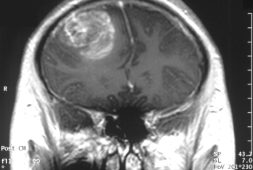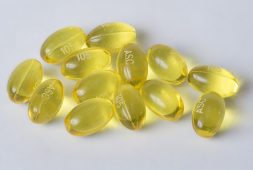
Here’s a painful fact: air pollution is responsible for the deaths of around 7 million individuals every single year. Sadly, 91 percent of the global population is constantly exposed to air that goes beyond the limits on pollution levels set by the experts of World Health Organization (WHO). Not too many people are concerned with this. In fact, many of them are indifferent or even apathetic towards the issue. It may be time to open our eyes to reality and realize how pollution wreaks havoc to health.
So, what is responsible for air pollution? The fine particulate matter is the culprit behind it all. This are directly or indirectly produced when the other pollutants present also react to chemicals found in the atmosphere. In a new study made, researchers highlight another type of pollutant. They call these the anthropogenic secondary organic aerosols (ASOAs) and these react with other pollutants as well. In fact, the researchers show how these so-called ASOAs are likely to significantly contribute to mortality that is linked to air pollution.
The Study Made by Experts
A new study was conducted and this was led by a team of scientists that were able to show and explain how an under-researched type of pollution, ASOAs, can actually make a significant contribution to air pollution mortality. The findings of this research was published in the journal Atmospheric Chemistry and Physics. The article highlights the need for greater focus on these types of aerosols and the necessity for further research into how, when, and where they react with other pollutants to cause and aggravate further air pollution.
The Fine Particulate Matter as the Culprit
According to experts of WHO, around 7 million people die each year because of air pollution. This number is concerning and has caused distressed by researchers and health experts alike. The organization also reports that over 90 percent of the population all over the world breathes air that exceeds the set safety standards for air pollution. The researchers discovered that fine particulate matter is a leading cause of this pollution. The deaths that result to this fine particulate matter have increased from an alarming 3.5 million per year in 1990 to 4.2 million per year in 2015.
According to the Environmental Protection Agency, fine particulate matter can be a result of either direct or indirect circumstances. Some direct sources of these are fires and construction sites around the city. Indirect sources, on the other hand, are chemicals such as nitrogen oxides and sulfur dioxide. These are oftentimes emitted by the burning of fossil fuels. As a result, they react with the other chemicals in the atmosphere to produce the dangerous fine particulate matter.
All about the ASOAs
ASOAs are a type of chemical that contribute to the formation of fine particulate matter. Previously, research has proven how these chemicals are found in inks, cleaning products, adhesives, and paints among many others. These are considered a major source of volatile organic compounds that contribute to fine particulate matter. Dr. Benjamin A. Nault has spoken to Medical News Today about it. He works for the Center for Aerosol and Cloud Chemistry, at Aerodyne Research Inc., in Billerica, MA. He is also a lead author of the research. He was asked to define ASOAs, and he said that these are “particulate matter that is formed through [the] chemistry of organic compounds emitted from human activities.”
He further explained, “These human activities include driving vehicles (emissions from tailpipes), cooking (charcoal emissions), heating (charcoal or wood), and volatile chemical products […] such as paint, adhesives, inks, cleaners, asphalt, etc. Some examples of these organic compounds include benzene, toluene, and xylenes.”
In the recent study made, the researchers had a goal. They wanted to further confirm the role that ASOAs play in fine particulate matter pollution. Dr. Nault told MNT that determining the amount of ASOAs is vital to this and said, “Particulate matter can be broadly classified as either primary or secondary. Primary particulate matter is particulate matter that is directly emitted from a source — think about the black smoke you may see coming out of a diesel vehicle or the smoke you see from a campfire or forest fire.”
Dr. Nault also added, “Secondary particulate matter is particulate matter that is produced by emissions that have undergone chemistry in the atmosphere — think about the sulfur dioxide that is emitted from coal fire plants that leads to acid rain.”
He further explained, “Due to this chemistry, secondary particulate matter can be more challenging to regulate, as you have to know both the emissions and the chemistry that leads to the particulate matter that is being observed and that can lead to health impacts. The secondary organic aerosol is one of the most difficult to regulate, as it is estimated that there are [thousands] of organic gases in the atmosphere from various emissions.”
Moreover, the doctor said, “Once these emissions enter the atmosphere, they can undergo rapid chemistry, which (a) allows them to become particulate matter but (b) can make it more challenging to trace that compound to an emission source. This combination of emissions and chemistry has led to a large effort from the research community to be able to understand secondary organic aerosol production and how it may impact human health.”
To put it simply, Dr. Nault explained, “However, many studies have typically not [been] able to predict the amount of secondary organic aerosol that has been observed. Our research was able to predict the amount of secondary organic aerosol for various cities and different emissions around the world, providing confidence that we could start investigating how secondary organic aerosol impacts human health.”
Dr. Brian McDonald also spoke about this issue. He works for the National Oceanic and Atmospheric Administration Chemical Sciences Laboratory, in Boulder, CO. Moreover, he is the co-author of the study. He said, “What’s new here is that we are showing this is an issue in cities on three continents, North America, Europe, and East Asia.”
As for Dr. Nault, he said, “The older idea was that to reduce premature mortality, you should target coal-fired power plants or the transportation sector.” And that “yes, these are important, but [we are] showing that if [you are] not getting at the cleaning and painting products and other everyday chemicals, then [you are] not getting at a major source.”
20 Years of Data Collected
To make it possible to determine the significance of the contribution of ASOAs to fine particulate matter, Dr. Nault and his team collected data from a total of 11 studies that had analyzed air quality in the last 20 years. The said data came from the many cities across the globe. These included the date collected from major metropolis areas such as New York, London, and Beijing.
The researchers utilized air quality models that also included satellite information. The data collected was analyzed so that they were able to determine the contribution that ASOAs made to fine particulate matter. They also linked this to the mortality rate brought about by fine particulate matter.
Strong Correlation Observed
The researchers did find a strong correlation between the production of ASOAs and volatile organic compounds. These two combined react in the atmosphere to create fine particulate matter. Using the models they had, the researchers estimated that ASOAs are behind 340,000 and 900,000 premature deaths each year. As in Dr. Nault’s words, “[That is] more than [10] times as many deaths as previously estimated.”
While regulations on air pollution emission have gone up over the years, ASOAs have seen relatively minimal regulation. Prof. Jose-Luis Jimenez, of the Cooperative Institute for Research in Environmental Sciences, at the University of Colorado Boulder, and a corresponding author of the study, spoke to MNT. He said, “The key problem is that the importance of ASOAs for mortality has not been recognized.”
He explained, “Previous studies concluded that the impact was small, and therefore, there was no urgency to regulate the chemicals that are most important to create ASOAs. Our research shows that the impact is quite large, and this recognition is the first step towards regulation. Then there is a need for research that provides more detail on the specific products and chemicals that are most important and to develop regulations to address these sources.”
He further stated, “It is similar to the way ozone pollution has been regulated: First, it was recognized as a problem in Los Angeles in the 1950s and 1960s and started to be regulated. As more was learned about the chemistry that led to ozone pollution, the regulations were more targeted and effective. But ozone pollution is still a problem in many places (for example, in Colorado this summer), as these pollutants are difficult to reduce to low levels and need continuing efforts.”
Future Research to be Conducted
When Dr. Nault spoke MNT, he said that in order to develop the findings of the present study, more research needs to be conducted, and this should be done on a global scale. He also said that a more detailed understanding of the makeup of ASOAs and fine particulate matter is required in order to get more insight on the issue.
Dr. Nault explained, “This research is just a starting point for [a] better [understanding of] secondary organic aerosol in urban areas and how it directly impacts human health. A big first area that needs to be added to this research is more observations around the world, especially throughout Central and South America, throughout Africa, and throughout Central, South, and Southeast Asia.”
He said, “We generally expect similar results [to what] we found in this research; however, this data would provide valuable insight into what the emissions are in these regions, whether trends we found in our research holds in these areas, and what the health impacts from [ASOAs] may be in these regions.”
He also pointed out how “Further, a better understanding of what is actually being emitted from these volatile chemical products, products that are used in everyday usage, is needed to better understand how [they] impact indoor and outdoor air quality and how these volatile chemical products [may be] similar or different for different regions around the world.”
He ended his explanation with this: “Finally, we use total particulate matter to describe the health effects from this pollution; however, we would think that certain material in the particulate matter would be worse for health effects. Continued research in understanding what is actually in particulate matter, including [ASOAs], and what material leads to the health effects can lead to better emissions standards and improved health.”
Individual Choices Needed
Dr. Nault said that we, as individual, need to do our part. He believes that we should use cleaner modes of transportation, avoid the use of solid fuels, and buy low emission products. All these combined can and will make a difference to how much we contribute to air pollution. According to him, “Transportation is still an important source of ASOAs and particulate matter. So, making sure that your vehicle is well tuned and taken care of ensures reduced emissions. If possible, using mass transportation or cycling will overall reduce this contribution further, as [having] fewer [individual] cars in urban areas will improve emissions.”
Hence, Dr. Nault said, “Reducing solid fuel use (charcoal, wood), when possible, is another important step in reducing contribution to ASOAs. Some localities have been pushing for ‘low emissions’ products, such as low emission paint. If low emission products are available, and you have the choice and ability to get such products, that will also lead to overall lower contributions of ASOAs.”
Changes need to take place to reduce this fine particulate matter that have significant impact on our health. While so much has yet to be understood, the changes in our lifestyle can help. While pollution goes hand in hand with development, we need to find the perfect balance. And should we manage to do that, we will be able to see how everyone can benefit from this.



